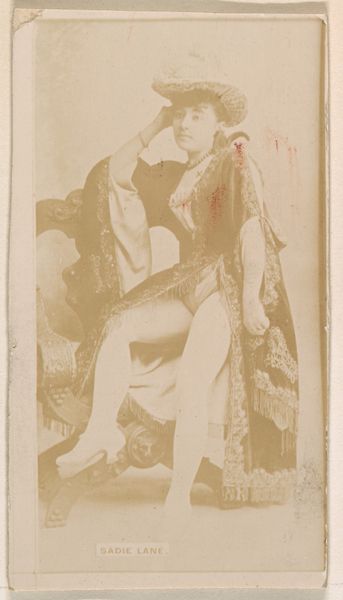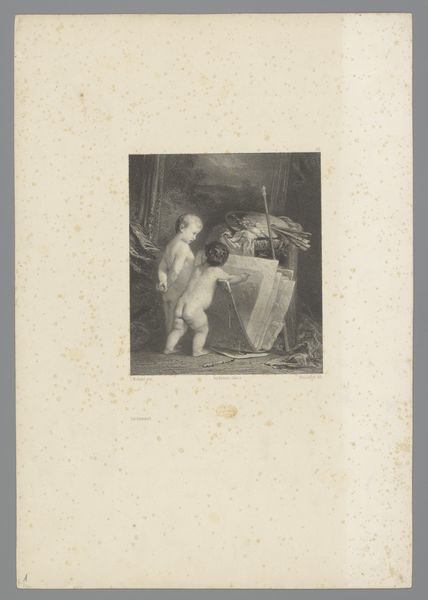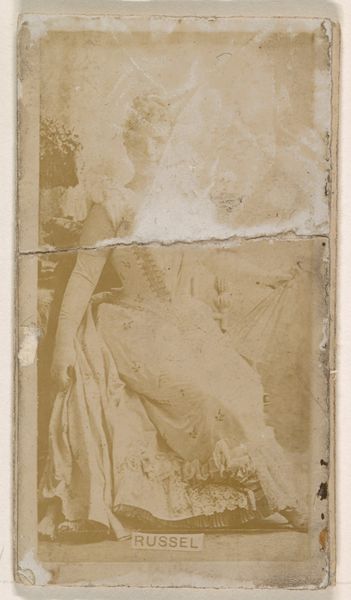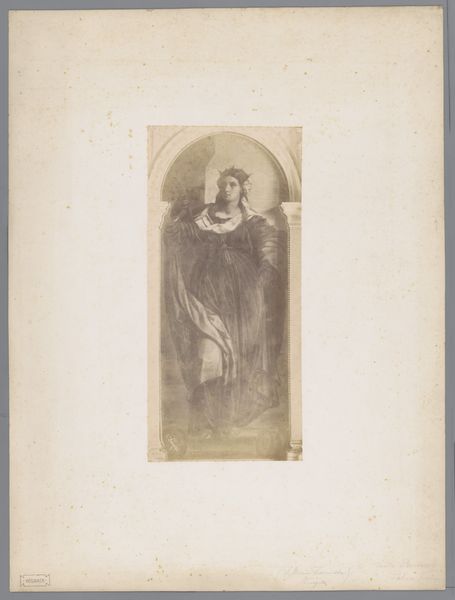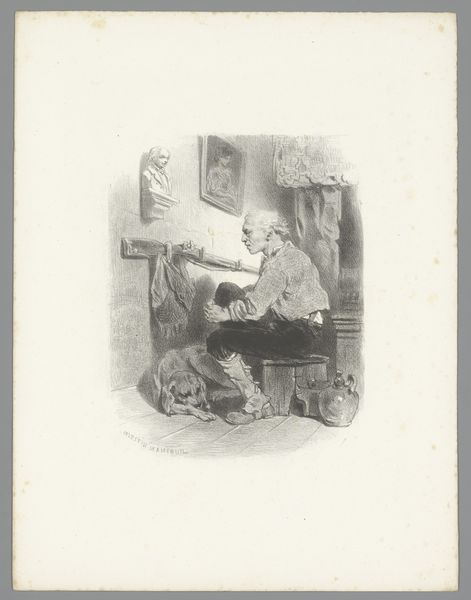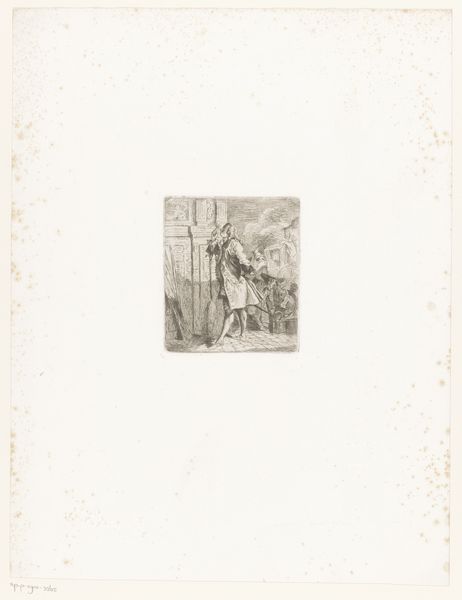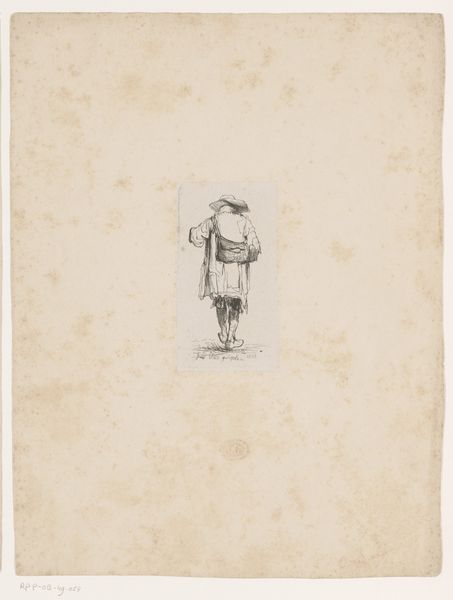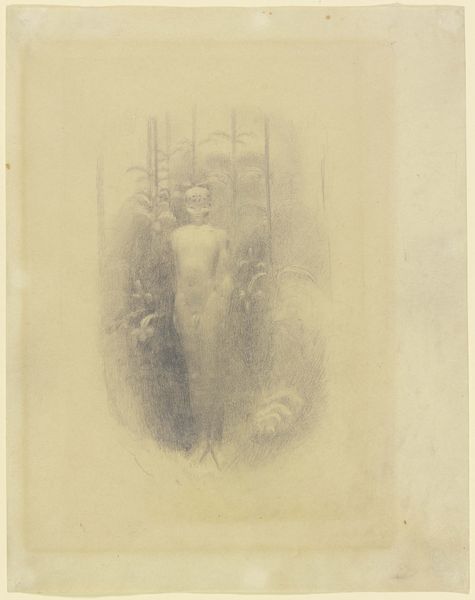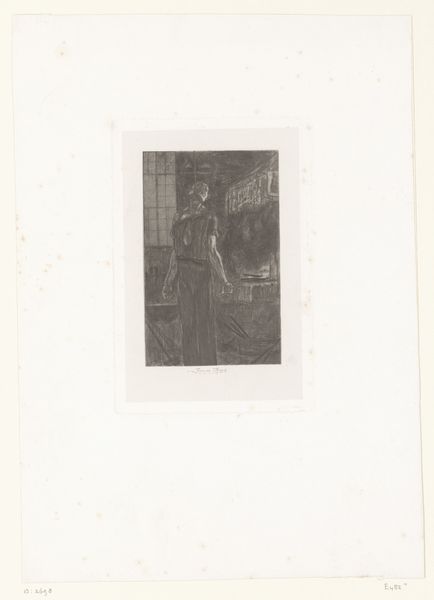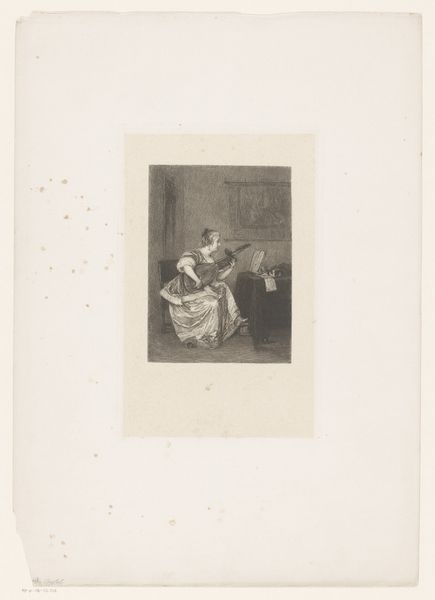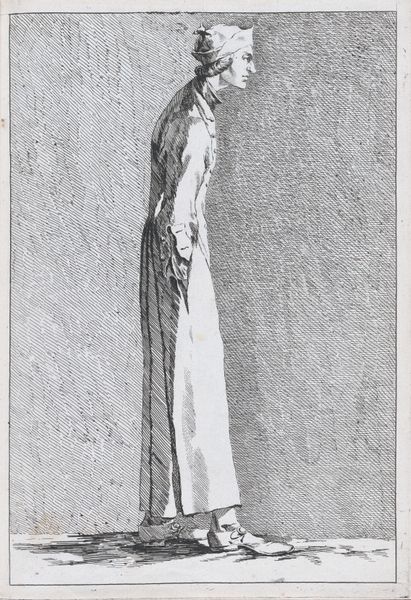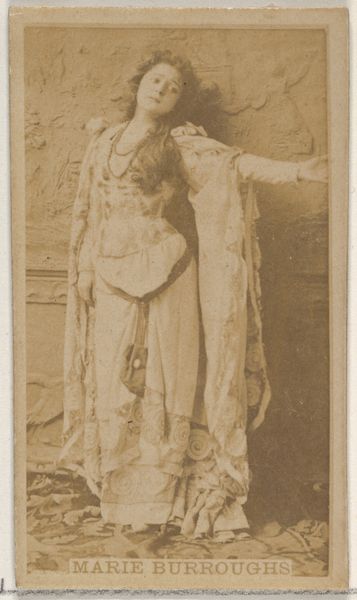
drawing, ink, chalk
#
pencil drawn
#
drawing
#
16_19th-century
#
landscape
#
ink
#
german
#
chalk
Copyright: Public Domain
Curator: Wilhelm Steinhausen created this pencil, ink, and chalk drawing, "Diether's Liberation," around 1884. It resides here in the Städel Museum. Editor: Wow, what a delicate, almost dreamlike rendering of a medieval scene! It feels like peeking into a storybook illustration, doesn't it? All grayscale, softened edges…it makes me want to know the story hidden in this place. Curator: Indeed! Steinhausen often drew inspiration from German folklore and historical narratives. You notice that the architectural style is characteristic of the Rhineland. The blank central rectangle was left to host the story, presumably of Diether, a local hero. Editor: I like that you mention that the architectural details signal Rhineland. So much cultural and political narrative lives in details like that. But back to this image's empty space… Isn’t that bold? It completely alters the dynamics! It draws me in, asking me to imagine what this "Diether's liberation" might entail. Curator: Exactly. Think about how Steinhausen’s work coincided with the growth of German nationalism. Landscapes were often vehicles for conveying political sentiments. Here, Diether may represent the collective German soul needing to be emancipated, possibly alluding to a need for stronger national identity. Editor: So the missing picture becomes a kind of Rorschach test for national hopes? Interesting! I confess, though, my interpretation leans more towards personal liberation. Those two figures descending the steps— are they cautiously optimistic, burdened, or both? And what about that large, shadowed doorway that seems almost forbidding? Curator: The lack of strong contrast suggests a time of delicate balance. And indeed, the perspective seems unusual—almost like the foreground is flattened against the background, mirroring a society attempting to resolve conflicts within and without. Editor: So, it's not just an image; it's a carefully constructed moment that embodies political sentiment within what appears, superficially, to be a simple slice of the past. Art holding a mirror up to society’s needs… Curator: Yes, the landscape embodies a symbolic role of something much bigger. Editor: Right. When I revisit it, maybe I will get Diether's backstory and have that central panel illuminated...
Comments
No comments
Be the first to comment and join the conversation on the ultimate creative platform.
